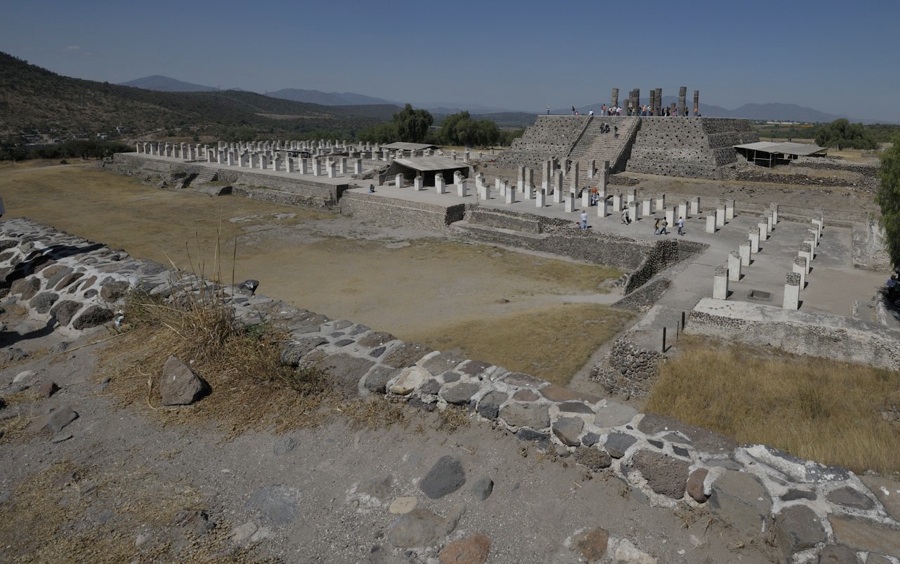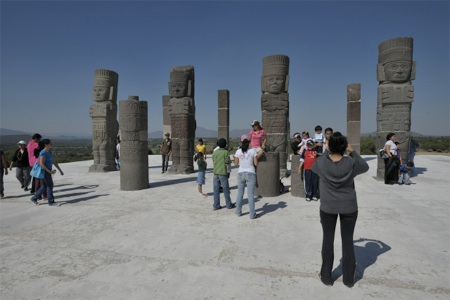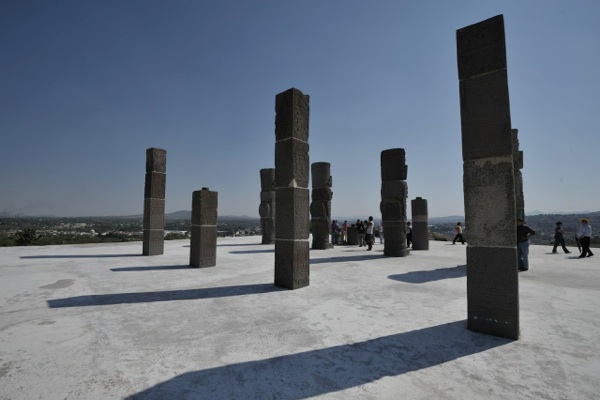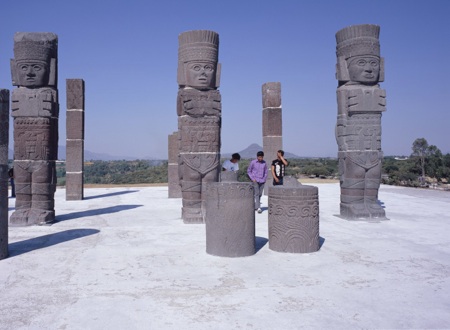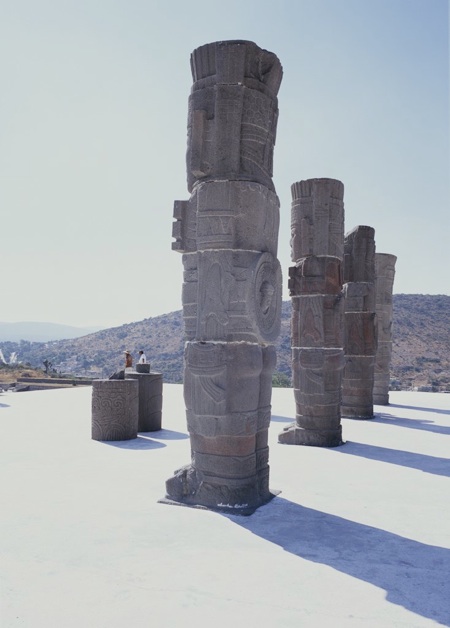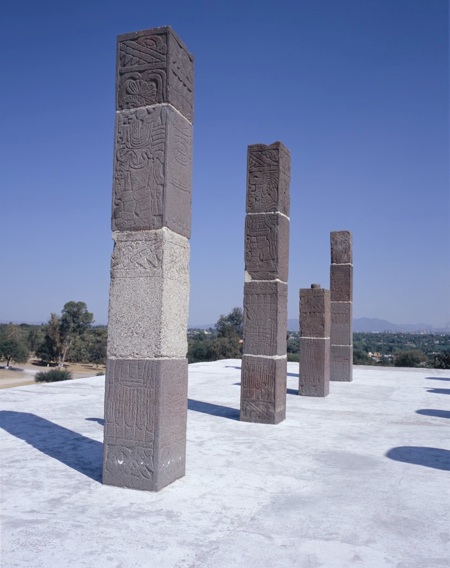After visiting the Palace of Quetzalcoatl, we finished with the main attraction: Pyramid B. Pyramid B features the amazing Atlantes statues/stelae. The energy still felt dense and uncomfortable, but the Atlantes figures were inspiring.
According to the INAH Plaque accompanying this pyramid, Pyramid B’s architectural design is different from Pyramid C and is characteristic of Toltec architecture. The inhabitants partially covered Pyramid B’s main facade with a large vestibule with multiple columns. The Atlantes and columns with reliefs behind them were not exposed to public view during Pre-Hispanic times. The pyramid’s top contained a temple, with the Atlantes holding up the temple’s roof. Archaeologists found columns shaped like plumed serpents at the temple’s entrance. The Atlantes represented Toltec warriors, whose attire indicated that they were high-ranking military officers. Their attire consisted of butterfly shaped breastplates, a helmet of fine feathers, mirrors set in turquoise mosaics, a knife, and other arms. The reliefs on the pillars feature kings or rulers of Pyramid C, each bearing a glyph of his name above his head. Archaeologists believe that the figure with the plumed serpent glyph represents the famous priest-king Topilzin Quetzalcoatl.


